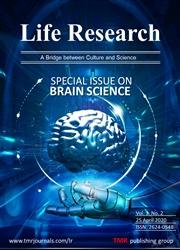A retrospective study on professor Gui-Qi Xuan’s experience in traditional Chinese medicine treatment on attention-deficit hyperactivity disorder: based on data mining and network pharmacology
引用次数: 0
Abstract
Background: To investigate the clinical medication approach of Professor Guiqi Xuan (Prof. Xuan) in treating pediatric patients with attention-deficit hyperactivity disorder (ADHD) and the potential mechanism of the core herbal prescription. Methods: Following medical record information pretreatment, the Traditional Chinese Medicine (TCM) inheritance computing platform system V3.0 was utilized to analyze the standardized data. The associate rules were summarized to identify the core prescription for treating ADHD. The extracted core herbal prescription’s active compounds and potential targets were used to establish a protein-protein interaction network of active ingredient-disease targets. Cytoscape 3.9.1 software was used to analyze the network’s topological parameters to obtain the key active ingredients and their targets. The Bioconductor data package of R4.0.2 was used to analyze the gene ontology biological functions and Kyoto Encyclopedia of Genes and Genomes pathways of key targets. Results: Two hundred and twenty-seven entries derived from TCM record information were selected. Through data mining, it was found that 62.5% of pediatric patients had short-tempered behavior, nearly half had sleep problems, and 30%–40% had picky eating and polyphagia issues. The highest-frequency syndrome type was kidney deficiency and liver hyperactivity. Deficiency, fire, phlegm, and dyspeptic food were the main pathological factors for ADHD. Prof. Xuan’s treatment of ADHD mainly focused on replenishing kidney essence and subduing Yang (active, external, ascending, warm, bright, functional and excited pertain to Yang). The core herbal prescription for ADHD included Yuan-zhi, Yi-zhi, Gui-jia, Bai-shao, Long-chi, Ci-shi, Shi-chang-pu, Yu-jin, Fu-shen, and Huang-jing. The protein-protein interaction network showed that MAOA, ADRB2, FOS, MAOB, and SLC6A3 were the five key targets essential in treating ADHD with core herbal prescriptions. The gene ontology biological function of crucial targets mainly involved G protein-coupled amine receptor activity, catecholamine binding, and neurotransmitter transmembrane transporter activity. Analysis of Kyoto Encyclopedia of Genes and Genomes pathways showed that the dopaminergic synapse signaling and neuroactive ligand-receptor interaction pathways were significantly enriched and may be the primary routes for the main treatment of ADHD. Conclusion: Prof. Xuan’s treatment of ADHD has achieved satisfactory clinical effects by supplementing the kidney, replenishing the essence, opening the orifices, nourishing the Yin (static, internal, descending, cold, dim, organic, depressed and pertain to Yin), and subduing the Yang. The major prescription predominantly affects catecholamine binding, neuroactive ligand-receptor interaction, G protein-coupled amine receptor function, and signaling pathways for dopaminergic synapses. Our findings showed that the methodology and software used in this research could explore and analyze the mechanism behind Prof. Xuan’s clinical medication rule for treating ADHD in children.基于数据挖掘和网络药理学的回顾玄贵麒教授中医治疗注意缺陷多动障碍的经验
背景:探讨宣桂琪教授(Prof. Xuan)治疗小儿注意缺陷多动障碍(ADHD)的临床用药方法及核心方剂的潜在作用机制。方法:采用病案信息预处理,利用中医传承计算平台系统V3.0对标准化数据进行分析。对相关规则进行总结,以确定治疗ADHD的核心处方。利用提取的核心方剂的有效成分和潜在靶点,建立有效成分-疾病靶点的蛋白质-蛋白质相互作用网络。利用Cytoscape 3.9.1软件对网络拓扑参数进行分析,得到关键活性成分及其靶点。使用R4.0.2版本的Bioconductor软件包对关键靶点的基因本体生物学功能和京都基因与基因组百科全书通路进行分析。结果:从中医病历信息中选取了227个条目。通过数据挖掘发现,62.5%的儿科患者有脾气暴躁的行为,近一半有睡眠问题,30%-40%有挑食和多食问题。出现频率最高的证型为肾虚肝亢。虚、火、痰和食性不良是ADHD的主要病理因素。宣教授对ADHD的治疗以补肾降阳为主(动、外、升、温、明、虚、激均属阳)。治疗ADHD的核心方剂包括元治、益治、桂佳、百芍、龙池、慈石、石昌普、郁金、复参、黄精。蛋白-蛋白相互作用网络显示,MAOA、ADRB2、FOS、MAOB和SLC6A3是核心中草药方治疗ADHD必不可少的5个关键靶点。关键靶点的基因本体生物学功能主要涉及G蛋白偶联胺受体活性、儿茶酚胺结合、神经递质跨膜转运蛋白活性等。京都基因和基因组百科全书通路分析显示,多巴胺能突触信号通路和神经活性配体-受体相互作用通路显著丰富,可能是ADHD主要治疗的主要途径。结论:宣教授通过补肾、补精、开窍、养阴(静、内、降、寒、暗、机、郁、属阴)、伏阳等方法治疗ADHD,取得了满意的临床效果。主要处方主要影响儿茶酚胺结合、神经活性配体-受体相互作用、G蛋白偶联胺受体功能和多巴胺能突触的信号通路。我们的研究结果表明,本研究使用的方法和软件可以探索和分析轩教授治疗儿童多动症的临床用药规则背后的机制。
本文章由计算机程序翻译,如有差异,请以英文原文为准。
求助全文
约1分钟内获得全文
求助全文

 求助内容:
求助内容: 应助结果提醒方式:
应助结果提醒方式:


